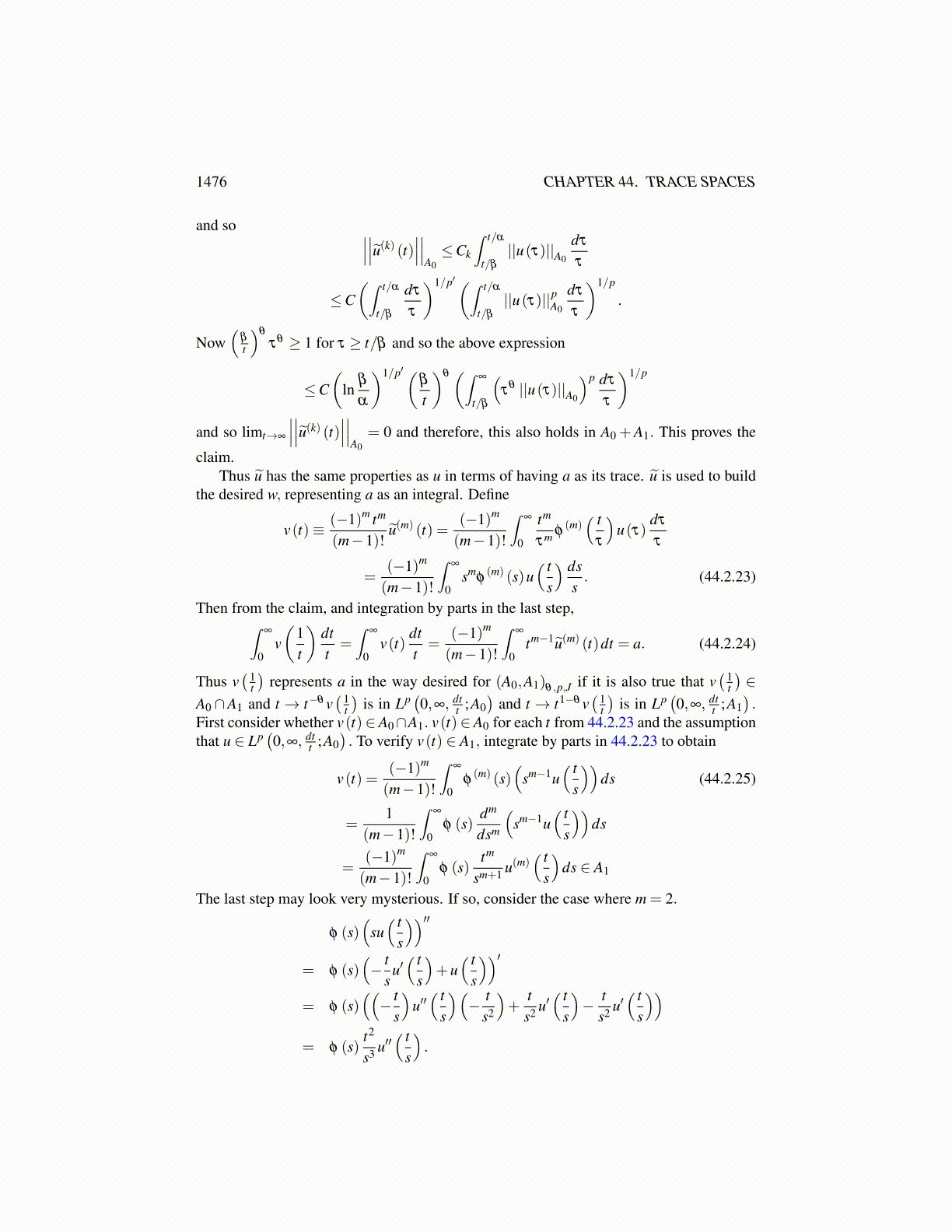
1476 CHAPTER 44. TRACE SPACES
Let a ∈ T (A0,A1, p,θ) and pick f ∈W (A0,A1, p,θ) such that γ f = a and
||a||T (A0,A1,p,θ)+ ε >∣∣∣∣∣∣tθ f
∣∣∣∣∣∣1−θ
Lp(0,∞, dtt ,A0)
∣∣∣∣∣∣tθ f ′∣∣∣∣∣∣θ
Lp(0,∞, dtt ,A1)
.
Then consider L f . Since L is continuous on A0 +A1,
L f (0) = La
and L f ∈W (B0,B1, p,θ) . Therefore, by Theorem 44.1.9,
||La||T (B0,B1,p,θ) ≤∣∣∣∣∣∣tθ L f
∣∣∣∣∣∣1−θ
Lp(0,∞, dtt ,B0)
∣∣∣∣∣∣tθ L f ′∣∣∣∣∣∣θ
Lp(0,∞, dtt ,B1)
≤ K1−θ
0 Kθ1
∣∣∣∣∣∣tθ f∣∣∣∣∣∣1−θ
Lp(0,∞, dtt ,A0)
∣∣∣∣∣∣tθ f ′∣∣∣∣∣∣θ
Lp(0,∞, dtt ,A1)
≤ K1−θ
0 Kθ1
(||a||T (A0,A1,p,θ)+ ε
).
and since ε > 0 is arbitrary, this proves the theorem.
44.2 Trace And Interpolation SpacesTrace spaces are equivalent to interpolation spaces. In showing this, a more general sort oftrace space than that presented earlier will be used.
Definition 44.2.1 Define for m a positive integer, V m = V m (A0,A1, p,θ) to be the set offunctions, u such that
t→ tθ u(t) ∈ Lp(
0,∞,dtt
;A0
)(44.2.15)
and
t→ tθ+m−1u(m) (t) ∈ Lp(
0,∞,dtt
;A1
). (44.2.16)
V m is a Banach space with the norm
||u||V m ≡max(∣∣∣∣∣∣tθ u(t)
∣∣∣∣∣∣Lp(0,∞, dt
t ;A0),∣∣∣∣∣∣tθ+m−1u(m) (t)
∣∣∣∣∣∣Lp(0,∞, dt
t ;A1)
).
Thus V m equals W in the case when m = 1. More generally, as in [16] different expo-nents are used for the two Lp spaces, p0 in place of p for the space corresponding to A0 andp1 in place of p for the space corresponding to A1.
Definition 44.2.2 Denote by T m (A0,A1, p,θ) the set of all a ∈ A0 +A1 such that for someu ∈V m,
a = limt→0+
u(t)≡ trace(u) , (44.2.17)
the limit holding in A0 +A1. For the norm
||a||T m ≡ inf{||u||V m : trace(u) = a} . (44.2.18)